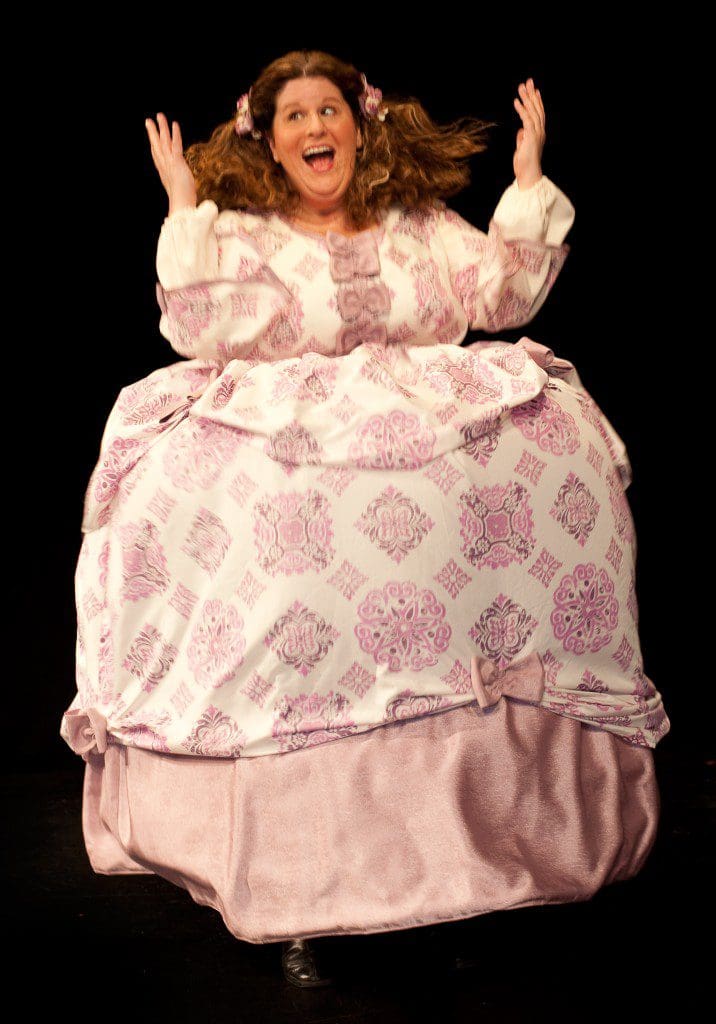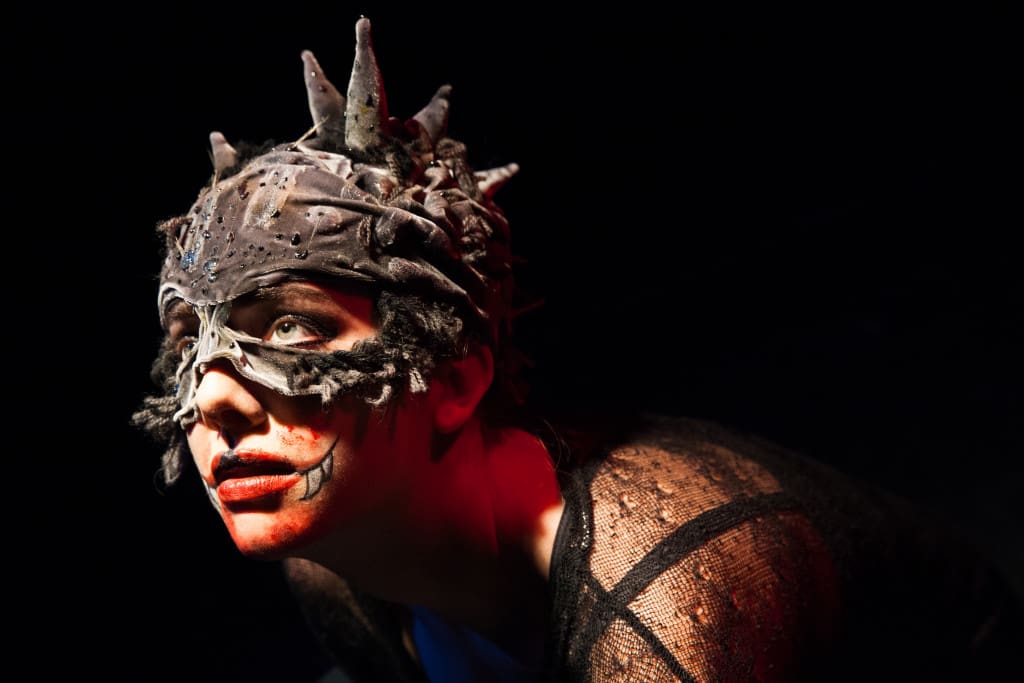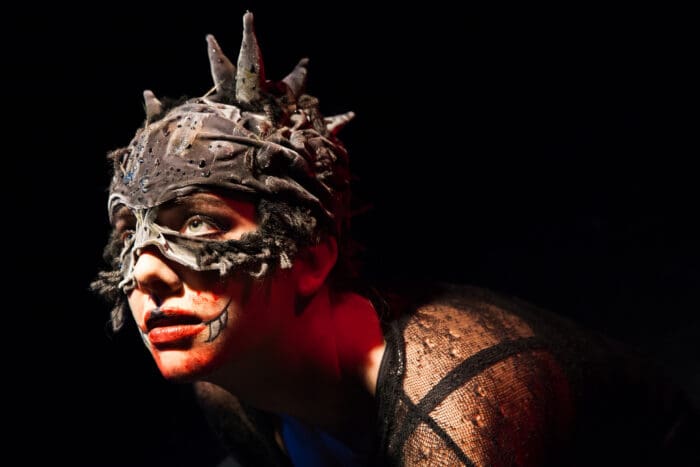 Possum Creek
Possum Creek
Beth Ann, a naïve farmer’s daughter with a heart of gold (and, ostensibly, unlimited ink and paper) left behind over 3000 letters written to her husband Joseph after he left home to fight in the Civil War just one day after their marriage – letters that would later serve as the basis for a documentary about the war and life in rural Ohio. While it sounds a bit like a sappy, romantic Nicholas Sparks novel, but Andrea Alton’s one-woman show Possum Creek is anything but. Inspired by Ken Burns’ award-winning documentary The Civil War, Alton’s play is more reminiscent of a Saturday Night Live sketch than The Notebook, replete with raunchy humor, social commentary, and, yes, a hackneyed romance.
Possum Creek is a comedy that recounts the life and death of Beth Ann, a dimwitted but enthusiastic young woman who regularly writes her new husband, revealing her inexperience with sexual relationships, her inability to read people and situations, and her fondness of sunflowers, and giving a general account of life in the Midwest during the Civil War. Beth Ann spends a good deal of time recounting stories about the visitors to her home. For example, unbeknownst to her, Beth Ann becomes a linchpin member of the Underground Railroad after a nice woman (“Harriet”) stops by and offers Beth Ann companionship in the form of railroad travelers. Much of Beth Ann’s life is also focused on starting a family, and, despite her best efforts at self-impregnation through her dreams (best not to ask…), she fails to conceive any children during her husband’s absence. These and other events suggest a sheltered existence, but there is something remarkably enjoyable about Beth Ann’s optimistic (if misinformed) outlook on life.
Alton’s parody hits some hilarious high notes, intermixing historical fact with fanciful fiction, such as the arrival of Harriet Tubman at Beth Ann’s home and the numerous hardships, including illness and hunger, that plagued rural American families during the mid to late 1800s. Injecting a healthy dose of social commentary addressing issues including race relations, same-sex relationships, and extramarital relations, Alton’s work pulls no punches in its quest to illicit laughter – although, like most comedy, not every line of dialogue works. In particular, several scenes in which Beth Ann describes her brother’s love affair with a Native American (resulting in the death of both) fall quite flat.
Much of the charm in Possum Creek stems from Alton’s performance as the delightfully bright-eyed and simple-minded Beth Ann, as well as the numerous supporting characters she embodies, from the recently blinded preacher to the good town doctor. Alton embraces and conveys Beth Ann’s youthful exuberance and innocence with gusto, punctuating her performance frequently with embellished mannerisms and high-pitched laughter. Her performance is aided by an almost-credible period dress with a hoop skirt that would rival anything in Scarlett O’Hara’s wardrobe (costume design by Anthony Catanzano), and farcical projections that both beautifully parody Burns’ Civil War documentary and simultaneously call attention to the absurdity of parts of that same documentary.
Single-performer stage shows are rarely fictional, with performers opting instead to showcase a personal narrative; however, Possum Creek is proof that comedic fiction in the form of a one-woman show is not only possible, but can also be downright hilarious. Despite some failings in both plot and humor, Alton demonstrates not only an appreciable understanding of the topic that she parodies but also a talent for crafting characters that would be as at home on an episode of Saturday Night Live as they are on a FringeNYC stage.
 Beware the Chupacabra!
Beware the Chupacabra!
The word “Chupacabra” conjures up images from The X-Files episodes and grainy black and white footage of mythical creatures – not, dare I say it, a musical production, but Mind The Art Entertainment does its upmost to defy expectations in its presentation of R. Patrick Alberty and Christian De Gre’s new musical Beware the Chupacabra! Part absurdist musical (think Little Shop of Horrors), part philosophical discuss, and part political debate, Beware the Chupacabra! probably should not work in totality (and often does not), yet there are elements of the show that are remarkably well-crafted and entertaining in surprising ways.
Set during the roaring 1920s, Beware the Chupacabra! tells the story of a young, people-pleasing dressmaker named Teddy Baskins who, spends his nights developing new wearable contraptions that will change the world – or so he claims. After getting swindled by an heiress who storms the store in which he works and steals one of his fabulous designs, Teddy is fired. Seizing the opportunity to have Teddy make her dresses for life, the bratty heiress beckons him to live in her father’s home, but her father, a surly old man with a hatred for Teddy Roosevelt and political aspirations, is less than enthused about the arrangement. Hoping to get rid of Teddy for good, he encourages Teddy to go to Mexico and prove his manhood by killing the dreaded Chupacabra alongside the father’s manservant (a faithful assassin who intends to take Teddy out once they reach the forest). Fortunately, Teddy’s well-meaning efforts and empathy both save his life and lead him to a stunning discovery with respect to the goat-sucking Chupacabra.
Exploring socio and political issues of race, wealth, entitlement, and man’s connection with nature, Beware the Chupacabra! includes some startlingly complicated themes in a very light-hearted way. True, some of the lines of inquiry are heavy-handed and trite (an entire song about how there are no longer poor people because of the prosperity of the 1920s?), but others, like those discussed in Teddy’s interactions with the Chupacabra are intriguing because of the way that they are presented. Alberty assumes that his audience has some base level of intelligence that will rise to the subject matter, making jokes about Teddy Roosevelt and Warren G Harding freely and writing characters who speak substantial portions of their dialogue in Spanish (an approach that I appreciate). Unfortunately, the positive aspects of the book are countered by the weak musical compositions accompanying the tale. Alberty and Gre’s music and lyrics feel like an exercise in simple composition and musical theatre construction 101, and this snooze-worthy formula results in no memorable musical numbers and very few stimulating musical moments.
However, the greatest detriment to this production is its heinous 2 hour and 15 minute run time – without an intermission – as well as its unfocused ending. In a world where humans have a shorter attention span than a goldfish, asking patrons to sit in less than luxurious* seat for over two hours without a break smacks of self-indulgence. While I respect that some one act plays must be single act to properly digest the playwright’s work, Beware the Chupacabra! is not such a play and, after the third solo ballad (that sounded remarkably like the previous two), my patience was gone and my mind had strayed. My attention issues were not helped by the meandering ending of the play, which suffered from Alberty’s attempts to create a poignant finale to an otherwise spritely and superficial show – the building blocks simply were not put in place early enough to warrant such a final repose.
Despite the flawed narrative, the production quality of this fringe show is quite excellent. Set designer Kyle O’Connor’s modest but colorful (and multi-faceted) set designs are both transformative and eye-catching, while Kate Marley’s make-up and an unnamed costume designer’s** 1920’s inspired looks, infused with a touch of harlequin, are bold and left me wondering what these designers are capable of with a larger budget. Less successful is Nik Robalino’s busy lighting design, which too often interrupts (rather than accompanies) the action on stage.
Many of the actors composing the Chupacabra ensemble embrace the farce of this production with enthusiasm. Unfortunately, due to incomplete credits provided for the ensemble, it is difficult to give praise to some exceptional performers. That said, Vinnie Urdea grew on me as the well-meaning Teddy, crafting a character reminiscent of Seymour from Little Shop of Horrors. Eric Whitten’s performance in multiple roles, from the inoffensive street beggar to the highly offensive would-be assassin, is engaging, and he has an undeniable stage presence even when not the principal player in a scene. Giving the most energetic, and certainly the most hilarious, performance of the show is Robb Moreira as the Mexican innkeeper. Moreira excels in his comedic timing and is as successful at drawing laughs from the audience with his body language as he is with his speech.
A goat-sucking mythical creature does not seem the natural subject for a musical; however, there Beware the Chupacabra! explores some interesting themes and aspects of the book have promise for additional development. Unfortunately, in addition to a weak musical composition, the ending could use a bit more thought and the playwright should give serious thought to adding an intermission to this overlong monster of a show.
*Okay, incredibly uncomfortable. This is off off-Broadway. Facilities tend to be a bit rundown (assuming they were comfortable to begin with).
**Production teams – make sure that your credits are complete, please! I regret not being able to acknowledge quality work by name.

